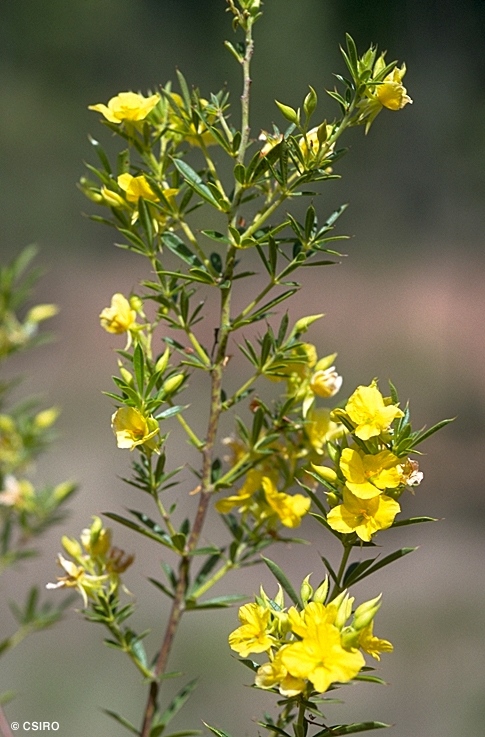Australian Tropical Rainforest Plants - Online edition
Labichea nitida Benth.





Bentham, G. (1864) Flora Australiensis 2: 293. Type: Queensland, Burdekin River estuary, E. Fifzalan s.n.; lecto: MEL. Fide J. H. Ross (1985) Muelleria 6: 35.
Usually flowers and fruits as a shrub about 1-2 m tall, occasionally when smaller.
Leaflet blades about 15-45 x 6-13 mm, leaflet stalks about 1.5-3 mm long. Leaflet apices ending in a needle-like spine. Compound leaf petiole absent or very short. Compound leaves difficult to discern and could easily be mistaken for whorled simple leaves. Stipules +/- linear, about 2-5 mm long.
Seed germination time 34 to 604 days. Cotyledons about 15-23 x 8-11 mm, bases cordate. First leaf simple, margin entire. Second leaf compound, pinnate with five leaflets but compressed so as to almost appear palmate but the terminal leaflet more than twice the size of the lateral leaflets. Leaflet apex aristate, the tip about 2 mm long. At the tenth leaf stage: at first sight the leaves appear to be in clusters on the stem but closer examination reveals that the clusters are in fact digitately compound leaves with 6 or 7 leaflets and lacking a compound leaf petiole. Leaflets variable in size, mainly obovate, apex subulate, base cuneate to attenuate, 1.4-4 x 0.5-1.2 cm, middle leaflet largest. Stipules linear, about 3 mm long. Lateral veins forming loops well inside the blade margin.
Endemic to Queensland, occurs in CYP, NEQ and CEQ. Altitudinal range from 100-550 m. Grows in a variety of vegetation types including open forest and heath but sometimes found in vine thickets and monsoon forest.
This species is of no agricultural significance, Hacker (1990).





